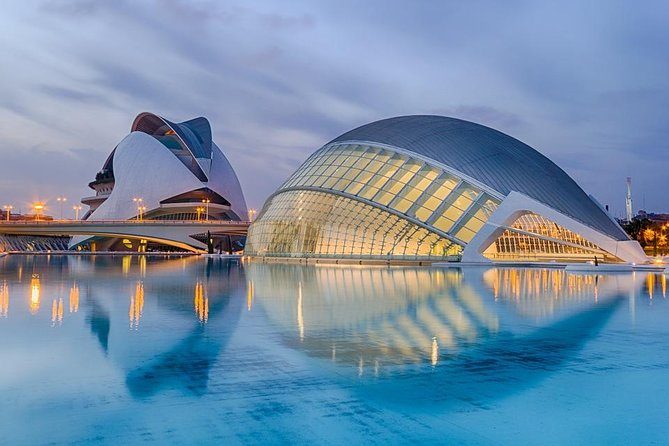
Valencia, the third-largest city in the country with a population exceeding 800,000, beckons with a harmonious blend of history, innovation, and Mediterranean charm. Renowned for its futuristic architecture, including the iconic City of Arts and Sciences, Valencia seamlessly intertwines modernity with its rich cultural heritage. The city’s economy thrives on diverse sectors such as agriculture, tourism, and technology, making it a dynamic hub on the Spanish Mediterranean coast. Boasting a delicious culinary scene, Valencia is the birthplace of paella, the iconic Spanish dish that reflects the region’s bounty of fresh ingredients. The city is ranked at Gamma+ in the Globalization and World Cities Research Network.
Some things to know about Valencia:
-A futuristic architectural marvel, the City of Arts and Sciences (Ciudad de las Artes y las Ciencias) stands as an iconic symbol of Valencia. This cultural and entertainment complex includes the Hemisfèric, the Science Museum, and the Palau de les Arts Reina Sofia, showcasing the city’s commitment to innovation and the arts.
-It is the birthplace of paella, the famous Spanish rice dish.
-Once a riverbed, the Turia River was diverted, and the space transformed into the Turia Gardens—a lush, green oasis spanning several kilometers through the heart of the city.
-Recognized as a UNESCO World Heritage site, La Lonja de la Seda (Silk Exchange) is a masterpiece of Gothic architecture. This historic building served as a center for silk trade during the city’s golden age.
-It is globally acclaimed for the spectacular Las Fallas festival held in March. This vibrant celebration involves elaborate and artistic sculptures (fallas) displayed throughout the city, culminating in a grand finale with the burning of these sculptures.
